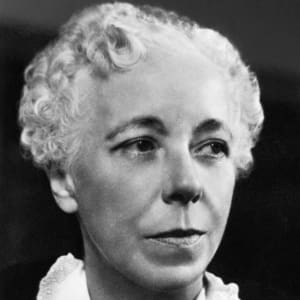
Karen Horney
Karen Horney was an influential psychoanalytic thinker best known as the author of The Neurotic Personality of Our Timeand New Ways in Psychoanalysis.
Synopsis
Karen Horney was born in Blankenese, Germany, on September 16, 1885. She attended medical school and began studying psychoanalysis. Horney moved to the United States in the 1930s and wrote two influential and controversial works, The Neurotic Personality of Our Time and New Ways in Psychoanalysis, which deviated sharply from Sigmund Freud's work. She died in New York City on December 4, 1952.
Early Life and Career
Karen Horney was born Karen Danielsen on September 16, 1885, in Blankenese, Germany. She studied medicine at the universities of Freiburg, Göttingen and Berlin, receiving her medical degree in 1911. She married Oscar Horney, a lawyer, while she was still in school. The couple was married for nearly 20 years, separating in 1926 and divorcing in 1937.
Horney became interested in psychoanalysis early in her medical career. She studied with Karl Abraham, a protégé of Sigmund Freud. From 1915 to 1920, Horney participated in psychiatric work for several Berlin hospitals. She then joined the teaching staff of the new Berlin Psychoanalytic Institute.
While committed to many elements of Freudian theory, Horney took issue with Freud's view of female psychology. She rejected what she saw as male bias in psychoanalytic thought, arguing that the source of female mental disturbance might lie in the male-dominated cultural context within which Freudian theory developed. She introduced the concept of womb envy, suggesting that male envy of pregnancy, nursing, and motherhood—of women's primary role in creating and sustaining life—led men to claim superiority in other areas of life.
Moves to the United States
In 1932, Horney moved to the United States to become associate director of the Institute for Psychoanalysis in Chicago. She left Chicago for New York City after just two years. There, she returned to private practice and resumed teaching at the New School for Social Research. She also produced two major theoretical works, The Neurotic Personality of Our Time (1937) and New Ways in Psychoanalysis (1939). In these works, Horney argued that environmental and social conditions, rather than biological drives, determine many elements of personality and help to shape neuroses. The various strategies the child adopts to cope with this anxiety can eventually become persistent and irrational needs that cause both neurosis and personality disorder.
Horney's ideas, rooted as they were in her wide clinical experience, were translated into a new approach to psychoanalytic therapy. Her refusal to adhere to strict Freudian theory caused Horney's expulsion from the New York Psychoanalytic Institute in 1941, which left her free to organize a new group, the Association for the Advancement of Psychoanalysis, and its affiliated teaching centre, the American Institute for Psychoanalysis. Horney founded the association's American Journal of Psychoanalysis, serving as its editor until her death in 1952. She also continued to write into her later years, further expounding her views that neuroses were caused by disturbances in interpersonal relationships in Our Inner Conflicts (1945) and Neurosis and Human Growth (1950).
Death and Legacy
Horney died on December 4, 1952, in New York City. The Karen Horney Foundation was established in New York, followed by the Karen Horney Clinic in 1955. Prominent in her own time, Horney has remained influential among psychiatric professionals and therapists, as well as scholars of gender and feminism, over the decades since her death.



